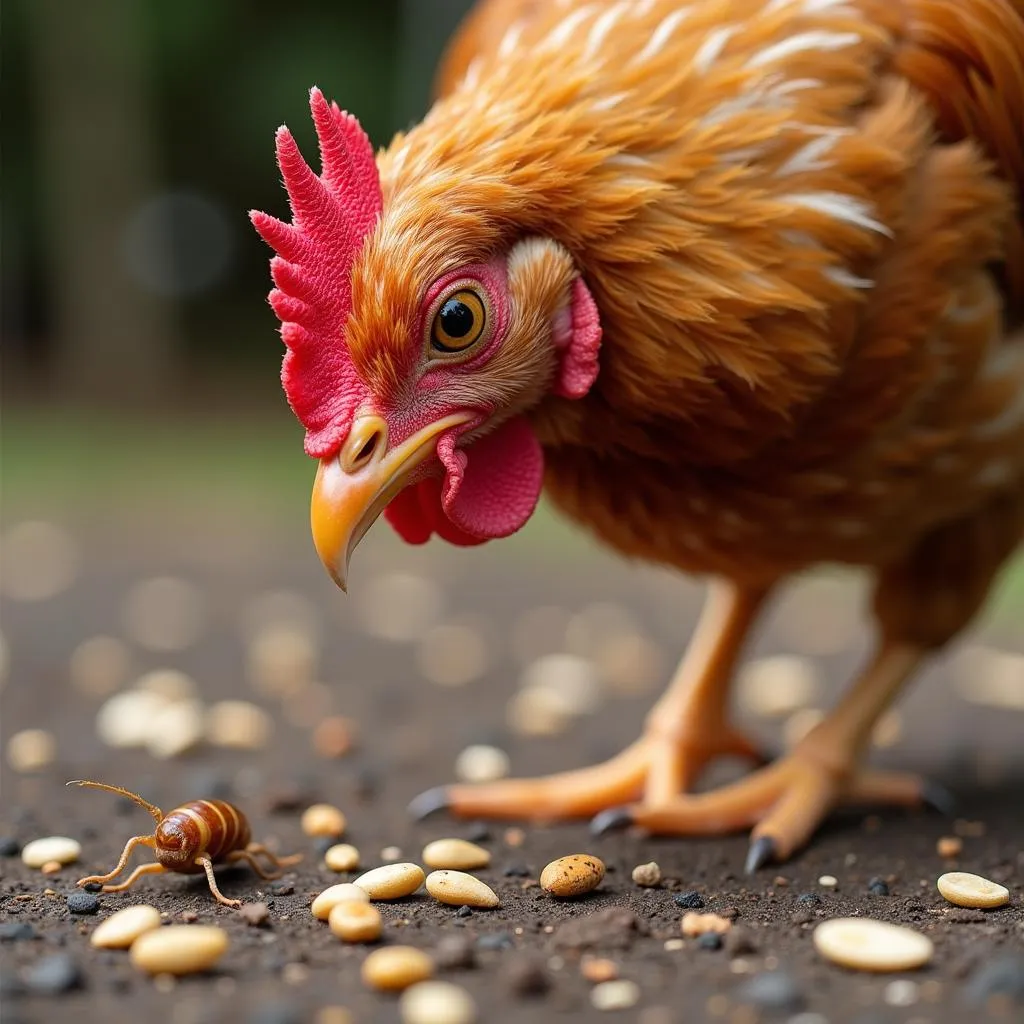We humans love a vibrant world full of colors, but have you ever stopped to wonder how other animals perceive their surroundings? Can our feathered friends, the chickens, see the world in the same colorful way we do? The answer, surprisingly, is yes! Chickens can see color, and in fact, their color vision is even more impressive than ours in some ways.
A Chicken’s Eye View: Beyond the Coop
While we often take our ability to see color for granted, it’s actually a complex process. Both humans and chickens rely on specialized cells in their eyes called cones to perceive color. Humans have three types of cones, allowing us to see a wide spectrum of colors. Chickens, on the other hand, have four types of cones! This means their color vision is tetrachromatic, giving them the ability to see ultraviolet (UV) light, a color invisible to the human eye.
 Chicken Eye Structure
Chicken Eye Structure
The Colorful Benefits of UV Vision
This ability to see UV light provides chickens with several advantages. For instance, they can use it to:
- Spot potential mates: Certain plumage patterns in chickens reflect UV light, making them appear more vibrant and attractive to potential partners.
- Identify predators: Many predators have fur or feathers that reflect UV light differently than their surroundings, making them easier for chickens to spot.
- Find food: Some insects and berries reflect UV light, aiding chickens in foraging for food.
 Chicken Searching for Food
Chicken Searching for Food
Colorful Chickens, Colorful Eggs?
While chickens have excellent color vision, it doesn’t directly influence the color of the eggs they lay. The color of a chicken’s eggshell is determined by genetics, specifically the breed of the chicken. For example, Orpington chickens are known for laying brown eggs, while Leghorn chickens typically lay white eggs. You can learn more about this fascinating topic in our article on why chicken eggs are different colors.
Seeing the World Through Chicken-Colored Glasses
So, the next time you’re around chickens, remember that they’re not just seeing a drab and colorless world. They’re experiencing a rich tapestry of colors, including hues we can only imagine. Their impressive color vision plays a vital role in their survival, communication, and overall well-being. It’s a reminder of the diverse and fascinating ways in which animals experience the world around them.
FAQ
1. Can chickens see in the dark?
Chickens have relatively poor night vision compared to some other animals. They need some light source to see well.
2. What colors are most stimulating to chickens?
Red and orange are thought to be the most stimulating colors to chickens, potentially triggering aggression or alertness.
3. Do chickens have a favorite color?
While there’s no definitive answer, research suggests chickens might have a preference for certain colors based on their feeding and mating behaviors.
4. Can chickens see colors in the same way humans do?
While chickens can see a wider range of colors than humans, their color perception is not identical to ours due to the differences in our cone cells.
5. Does the color of a chicken coop affect the chickens?
While not fully understood, some studies suggest that the color of the coop might have subtle effects on chickens’ behavior and egg production.
Interested in learning more about animal vision? Check out our article on can doves see color?
Need Help with Your Next Design Project?
Contact Color Box Hanoi today! Our team of color experts is here to help you create vibrant and inspiring spaces that reflect your unique style. Call us at 0373298888, email us at SEO.backlink@gmail.com, or visit our showroom at 86 Cầu Giấy, Hà Nội. We offer 24/7 customer support to answer all your questions and provide expert guidance.

